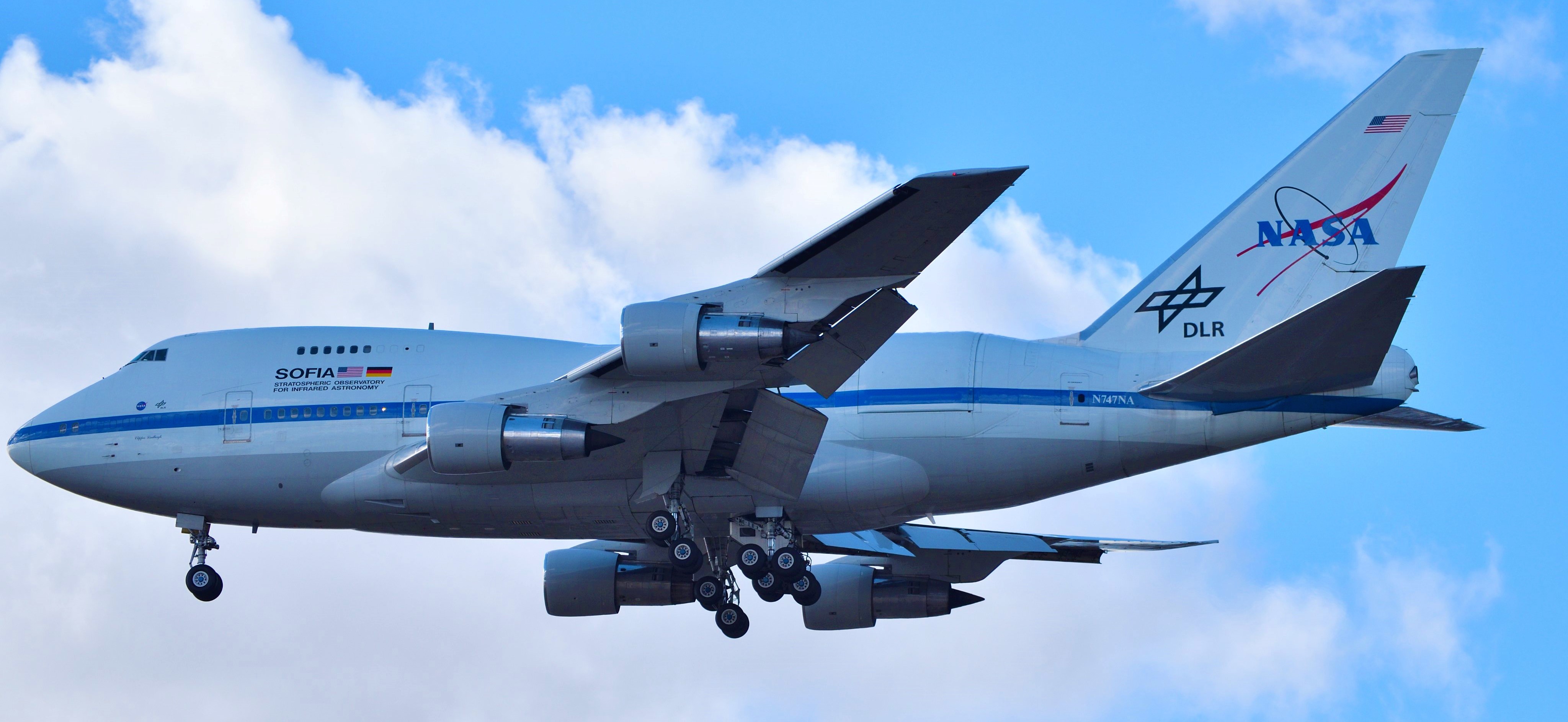


It was coming , after its last mission in September and the flyby for the Aerospace Valley Air Show ! SOFIA has now reached a new “forever home” at the Pima Air & Space Museum in Tucson. On 13th December , SOFIA took off for the last time from NASA’s Armstrong Flight Research Center in Palmdale, California.
The pilots performed one last flyby of the area with a wing tilt to acknowledge everyone in the community who has supported and worked on SOFIA. The aircraft landed in Tucson, at the Davis-Monthan Air Force Base, where it will undergo final preparations before it is towed to the museum to eventually be on display to the public.
“The SOFIA mission may have ended, but the future is bright,” said Dr. Naseem Rangwala, the SOFIA project scientist at NASA’s Ames Research Center in California’s Silicon Valley. “SOFIA has made numerous and significant contributions to astrophysics and will continue to do so as our scientific community finds new and creative ways to analyze SOFIA data in the archive.”
SOFIA is a modified Boeing 747SP jet that was operated out of Armstrong , carrying a 19-ton, 2.5-meter telescope known as Sofia. The SOFIA mission’s operations ended on Sept. 29, 2022 , but the team of incredible and diligent pilots and mechanics continued to support SOFIA as it prepared to go to its new home.
SOFIA is part of NASA’s legacy of airborne astronomy. Building on the successes of the Galileo I aboard a Learjet and the Kuiper Airborne Observatory, SOFIA was developed to provide the astrophysical community unprecedented access to the mid- and far-infrared wavelengths of light.
This part of the electromagnetic spectrum is difficult to observe from Earth’s surface, because water in the atmosphere blocks mid- and far-infrared light from reaching the ground. SOFIA, flying above 99.9% of water in the atmosphere, could make observations of a wide variety of phenomena, from to cosmic magnetic fields.
In fact, SOFIA revolutionized the study of cosmic magnetic fields in astrophysics. Other observatories, like ESA’s (European Space Agency’s) Planck space observatory, could also detect polarized light and learn how these invisible forces affect galaxies. SOFIA, however, allowed scientists to make observations on much smaller scales.
With the HAWC+ instrument, SOFIA probed dark rivers of material, called filaments, where stars start to form. They investigated the “bones” in galactic arms and caught the aftermath of galactic mergers. SOFIA also studied our galaxy and closest galactic companions, the Magellanic clouds.

SOFIA observed cosmic bubbles and how groups of massive stars trigger star formation or quench it, in some cases. SOFIA also could study molecules, making the first-ever detection of helium hydride, the first type of molecule that ever formed in the universe. SOFIA also turned its gaze on things much closer to home, like Venus’s atmosphere, comets, Pluto, and the Moon.
As the aircraft will be at the Pima Air & Space Museum, the SOFIA leadership team at NASA would like to share some thoughts:
“We want to express our gratitude to everyone, both our U.S. and German colleagues, who, over the years, developed, tested, and operated the observatory at Ames and Armstrong. It has been an incredible team effort to create and operate the world’s largest airborne observatory. "
"None of this would have been possible without the community of scientists who have used and supported SOFIA over the years. We look forward to hearing everything the SOFIA scientific community learns as we go on. It is with heartfelt thanks that we at NASA say goodbye to SOFIA. We are sad to see you go but so happy to have worked with the SOFIA team.”
SOFIA was a joint project of NASA and the German Space Agency at DLR. DLR provided the telescope, scheduled aircraft maintenance, and other support for the mission. NASA’s Ames Research Center in California’s Silicon Valley managed the SOFIA program, science, and mission operations in cooperation with the Universities Space Research Association, headquartered in Columbia, Maryland, and the German SOFIA Institute at the University of Stuttgart.
The aircraft was maintained and operated by NASA’s Armstrong Flight Research Center Building 703, in Palmdale, California. SOFIA achieved full operational capability in 2014 and concluded its final science flight on Sept. 29, 2022.
Source : NASA’s Armstrong.
